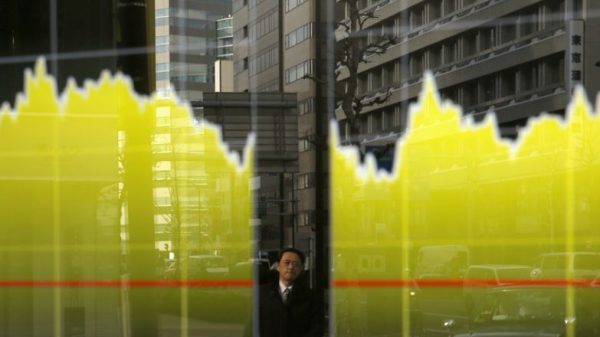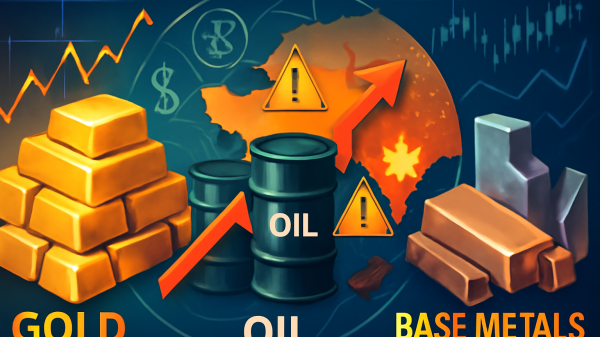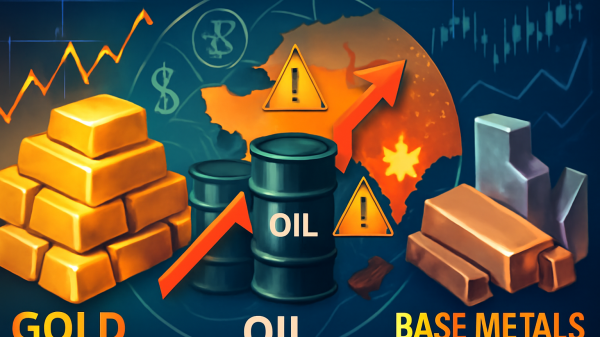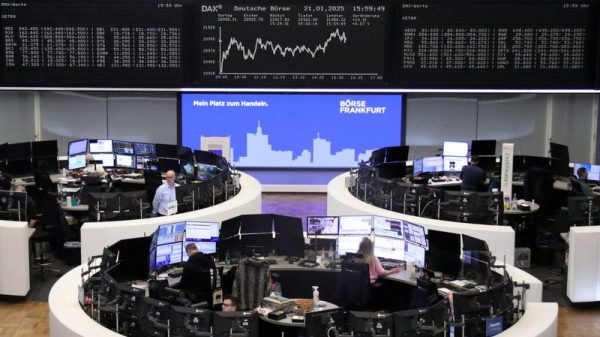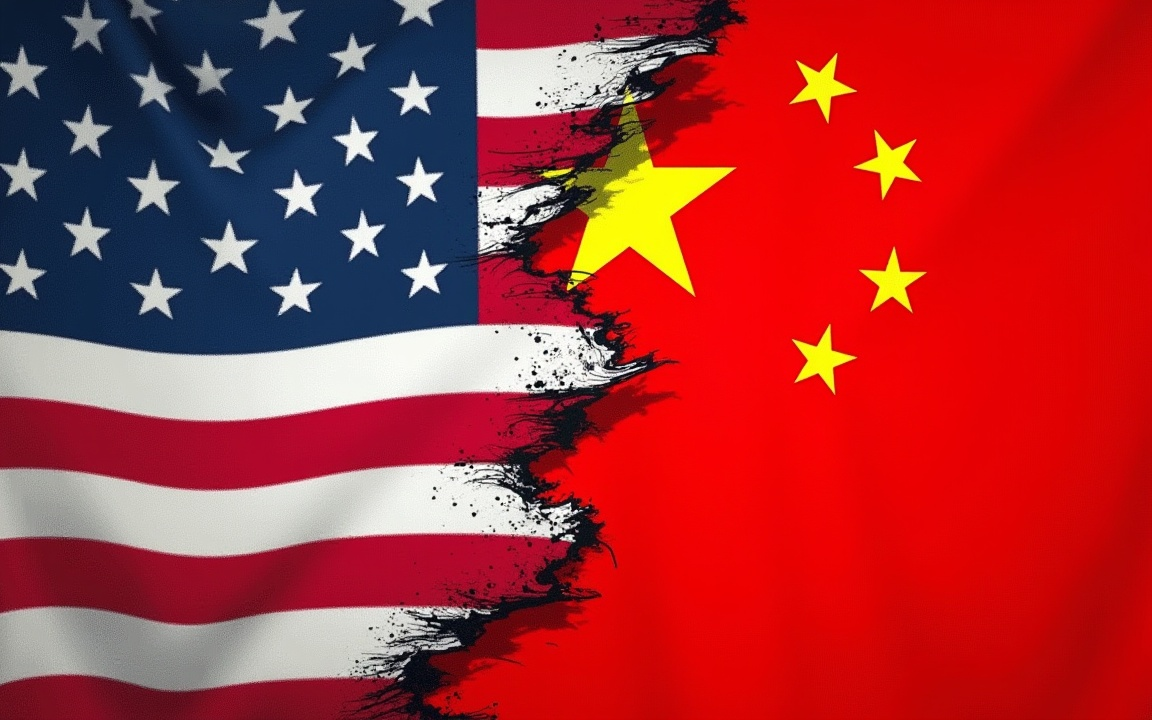Donald Trump’s new plan to double tariffs on all Chinese imports has reignited one of the world’s most important economic rivalries. And it’s not even the first time this year.
The current situation goes beyond another tariff battle. It is a fight over time, as China has found a far more effective tool than import duties, and it is already using it.
Investors who thought they understood trade war risks may need to rethink this one.
A fragile truce unravels
On Friday, global markets felt the first tremor of a new US–China trade shock. Trump announced an additional 100% tariff on every Chinese product entering the United States starting November 1.
The S&P 500 fell sharply on the news, recording its largest single-day drop since April. The Nasdaq tumbled more than 3%.
In Beijing, officials accused Washington of “double standards” and warned of “countermeasures.” They also hinted that China would not back down.
The temporary truce reached in May had reduced tariffs and reopened some trade channels.
But each government interpreted the deal differently. Xi Jinping viewed it as a freeze on new restrictions. The Trump administration saw it only as a tariff adjustment.
When the US tightened its export rules on advanced chips last month, China concluded that they had broken the agreement. The new tariff threat followed days later, so the truce is now effectively dead.
Beijing’s new weapon of choice
In past disputes, China has responded with its own tariffs. Now it is targeting something far more sensitive, which is time.
From November 8, China will require government licenses to export grid-scale lithium batteries, cathode and anode materials, and battery-making machinery.
These are the core of modern energy storage and electric vehicles. The policy allows China to decide who receives shipments and when.
Data from Bloomberg shows that China produces about 96% of the world’s anode materials, 85% of its cathodes, and roughly 90% of rare earth minerals used in everything from wind turbines to missiles. Around 65% of US grid-scale battery imports this year have come directly from China.
That means the US energy transition, which is already stretched by data-center power needs and the growth of artificial intelligence infrastructure, now depends heavily on Chinese exports.
If licenses are delayed even a few weeks, American battery and defense manufacturers could face immediate shortages.
The US can raise prices through tariffs, but China can stop deliveries with a stroke of a pen. The first hurts profits. The second halts production.
A familiar pattern in the markets
Investors have seen this movie before. In August 2019, Trump ordered American companies to “find alternatives” to China, sending markets sharply lower. Three days later, he told reporters that China wanted to talk, and stocks surged.
In May that same year, a tweet about higher tariffs caused a Monday slump followed by a mid-week recovery once negotiations resumed.
The same thing happened on August 1st, when a fresh wave of aggressive tariffs against dozens of trading partners triggered a global market slide. Yet again, the market opened green again on Monday, August 4th.
Short-term rebounds like these are common because the White House often softens its tone after the initial reaction. The difference this time is that the tariff rate, which rises as high as 140% when stacked on existing duties, would be high enough to stop trade altogether, not just raise prices. That level of protection would shut down rather than reshape supply lines.
China’s own actions have also become more sophisticated. Instead of retaliating instantly, its own leverage tools to create uncertainty. US firms will not know if or when their shipments will be approved. That uncertainty alone can disrupt contracts, delay projects and increase financing costs.
The pressure points that matter
The immediate economic risks are concentrated in three areas.
The first area is energy storage, where utility-scale battery projects are expanding rapidly. US grid capacity for battery storage reached 26 gigawatts in 2024 and could exceed 130 gigawatts within a decade.
China’s control of cathode and anode materials means any slowdown in export approvals could delay those installations and push electricity prices higher.
The next area is defense and aerospace. Rare-earth magnets are essential for precision guidance, radar and aircraft motors. The last time China restricted these exports, US suppliers experienced production bottlenecks within months.
Last and most important is technology supply chains. China’s new software restrictions mirror the US curbs on semiconductors.
Each side is now limiting the flow of tools the other needs to innovate. For global firms caught in the middle, the risk is no longer just tariffs but sudden access loss.
The new battlefield
The most important change in this trade war is the weapon of choice. Tariffs move prices. Export licenses move time.
A 100% tariff adds cost that companies can eventually pass to consumers or absorb in margins. A missing export license means the material simply does not arrive.
In industries running on just-in-time logistics, such as AI servers, electric vehicles and grid batteries, time is the one resource that cannot be hedged.
This strategy serves two purposes for China. It deters the US from escalating while reinforcing China’s dominance in sectors that matter for the next industrial cycle.
For Trump, the new tariff threat plays well politically before next year’s midterms. But it also risks slowing US manufacturing projects that his administration has promoted as proof of economic strength.
Markets understand this tension, which is why they sold off so aggressively on Friday. The drop was not just fear of tariffs but recognition that critical supply lines could freeze before year-end.
What investors should watch next
The next few weeks will determine whether this confrontation becomes another temporary scare or the start of a deeper decoupling.
Whether the Trump–Xi meeting in South Korea still happens is a major indication of things to come. Even a brief handshake or promise of further talks could stabilize sentiment.
If the US decides to build exemption lists for its tariffs, as it has done in every previous round, will be another big catalyst which could cause the markets to rebound.
Now whether Chinese export licenses actually start to flow to American buyers is another big question. If approvals are issued to major energy and defense firms, the market will likely recover quickly. If they are delayed, production schedules in multiple sectors will slip within weeks.
Past experience shows that when Trump’s threats remain rhetoric, markets rebound. When they become policy and China responds in kind, equities and trade volumes suffer lasting damage.
The post Does China have the upper hand in Trump’s new trade war? appeared first on Invezz

